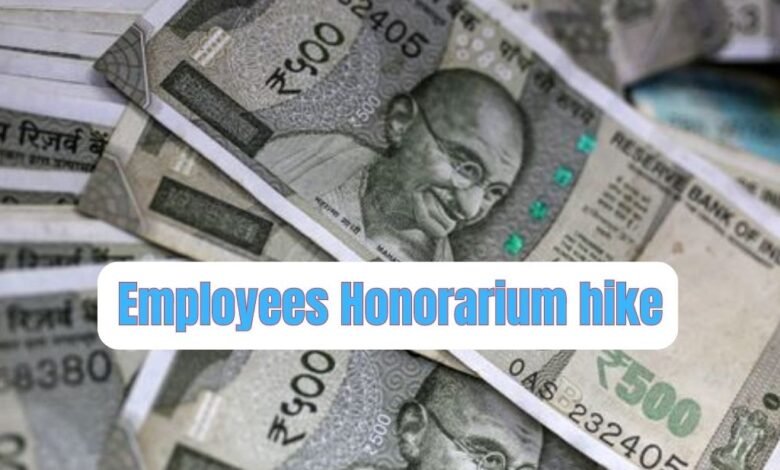
Mega salary hike for central govt employees as DA to touch 50%: HRA, gratuity, other components will also
Nee Delhi. Mar 05, 2024, .Central government employees are eagerly waiting for their next dearness allowance (DA) hike. Going by the Consumer Price Index for Industrial Workers (CPI-IW) numbers, as published by the Labour Bureau, a wing of the Ministry of Labour, the dearness allowance is likely to increase to 50% for central government employees.
DA is a component of the salary of central government employees. It is aimed at easing the impact of inflation.
Now, if DA hits 50%, certain other allowances and components of the salary will also increase, which will lead to a significant jump in your salary. The 7th Central Pay Commission has made detailed provisions on how DA touching 50% will impact your salary. Let’s find out the details here.
HRA, Children’s education allowance, daily allowance, other allowances to increase when DA hits 50%
Manmeet Kaur, Partner, Karanjawala & Co, says the allowances that will go up when DA reaches 50% include
1) House rent allowance.
2) Children’s education allowance
3) Special allowance for child care
4) Hostel subsidy
5) TA on transfer (transportation of personal effects)
6) Gratuity ceiling
7) Dress allowance
8) Mileage allowance for own transport
9) Daily allowance
For instance, all central government employees get a House Rent Allowance (HRA), depending on where they stay. According to the recommendations of the 7th Pay Commission, HRA has been rationalised to 24%, 16% and 8% of the basic pay for class X, Y and Z cities, respectively, from July 1, 2017. When DA touched 25%, rates of HRA were revised to 27%, 18% and 9% of basic pay in X, Y and Z cities, according to the recommendations of the 7th Pay Commission.
Now, it is also recommended that the rates of HRA will be revised to 30%, 20% and 10% of basic pay in X, Y and Z cities, respectively, when DA reaches 50%.
How much will your HRA increase? Giving an example, Sanjeev Kumar, Partner, Luthra and Luthra Law Offices, India, says, “The House Rent Allowance which is paid to the employees depends on the type of city they reside in. The HRA for type X, Y and Z cities is 27%, 18% and 9%, respectively. Therefore, at a base pay of Rs 53,500, the HRA received would be Rs 14,445 (type X), Rs 9,630 (type Y) and Rs 4,815 (type Z), respectively. However, once the DA touches 50%, HRA will increase by 25% (from the base percentage) for all types of cities. Therefore, the new HRA for types X, Y and Z cities will change to 30%, 20% and 10%, respectively. Accordingly, the HRA would be revised to Rs 16,050 (type X), Rs 10,700 (type Y) and Rs 5,350 (type Z), respectively.”
Children’s education allowance will be increased by 25% every time DA reaches 50%, as per the recommendations of the 7th Pay Commission. For instance, if a central government employee now gets Rs 2,250 per month as children’s education allowance, it will rise to Rs 2,812.5 per month when DA hits 50%.
Similarly, several other components such as special allowance for child care, gratuity ceiling, dress allowance and daily allowance will be increased by 25% when DA reaches 50%. “This is because these allowances are linked to the DA, and when it goes up, they do too, helping employees keep up with the cost of living,” says Shri Venkatesh, Managing Partner, SKV Law Offices.
“These modifications are designed to align with the rising cost of living, ensuring equitable compensation for government employees,” says Abhishek Awasthi, Partner, RR Legal Partners LLP.
It will depend on the components of your salary and the hike will vary according to pay level. Further, the composition of salary of central government employee may vary subject to the allowance heads applicable, if any.
Will DA merge with basic pay when it crosses the 50% threshold?
The answer is no. DA does not automatically merge with the basic pay once it crosses the 50% threshold. At least the 7th Pay Commission Report did not recommend any such measure.
Answering this query, Kumar says, “The central government implemented the 5th Central Pay Commission’s recommendation to merge 50% of the dearness allowance with the basic pay, affecting both employees and pensioners, in 2014. However, no such merger was advocated by the Sixth Pay Commission. Instead, it introduced a concept of delinking pay revisions from a fixed 10-year cycle, tying them to the DA/DR crossing the 50% mark. This approach has been consistently upheld by the last three Central Pay Commissions, emphasising that future pay revisions should occur when the DA/DR reaches or surpasses 50% of the basic pay, mitigating the adverse effects of inflation. However, it is not to be merged automatically





